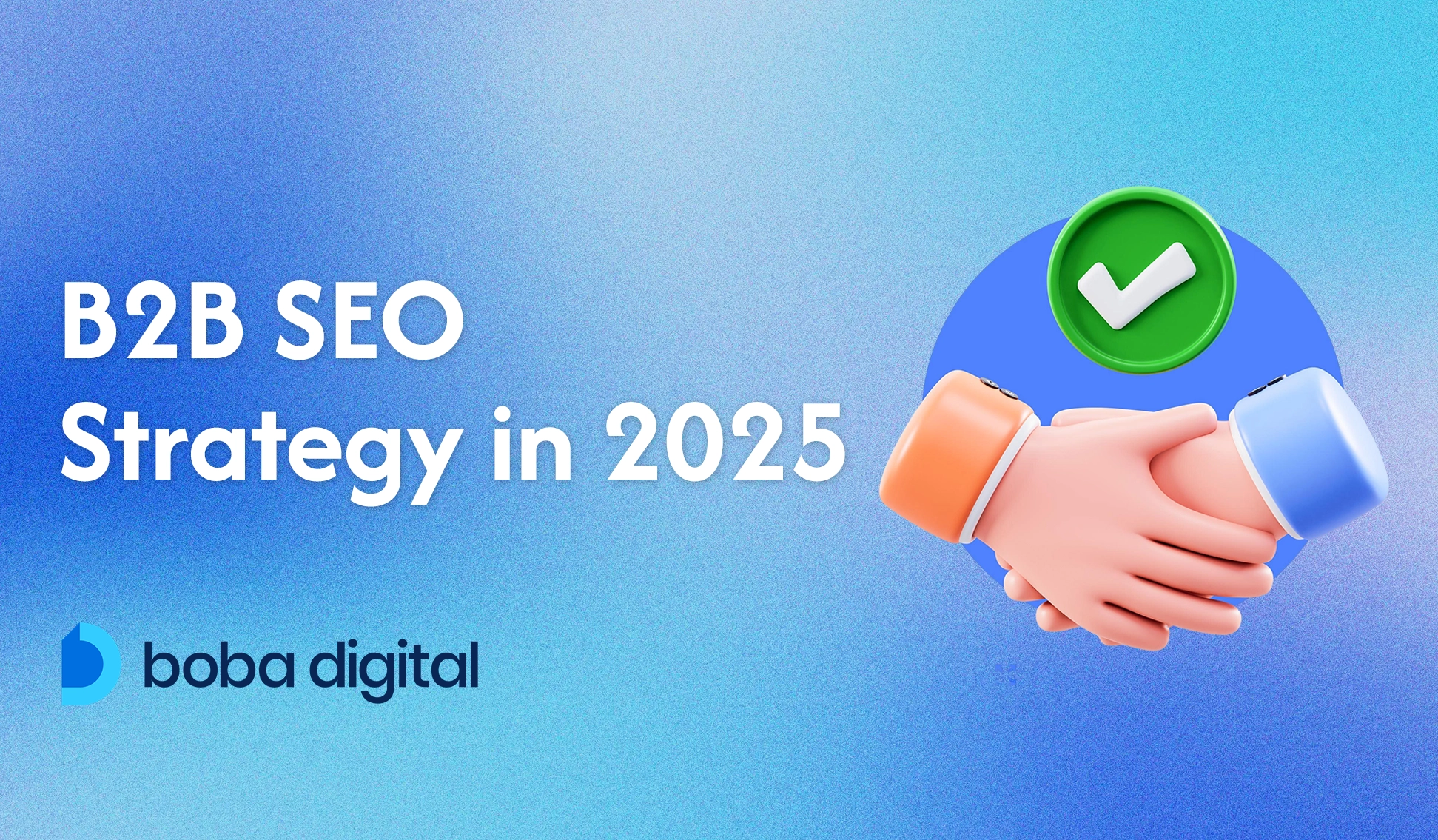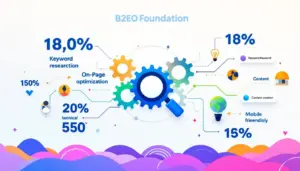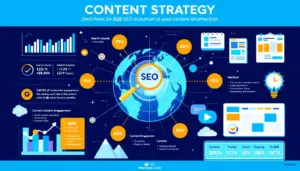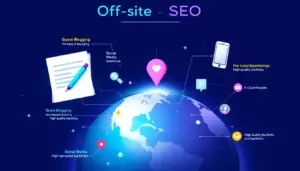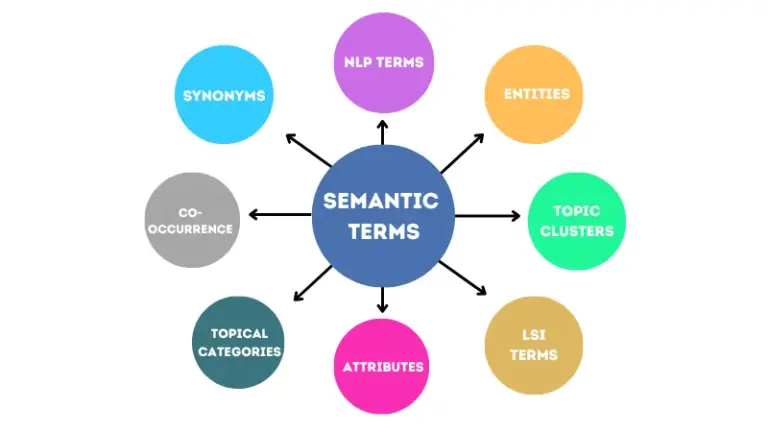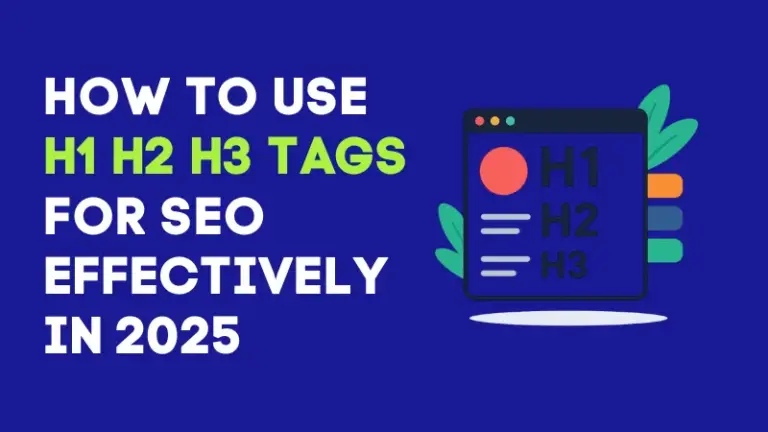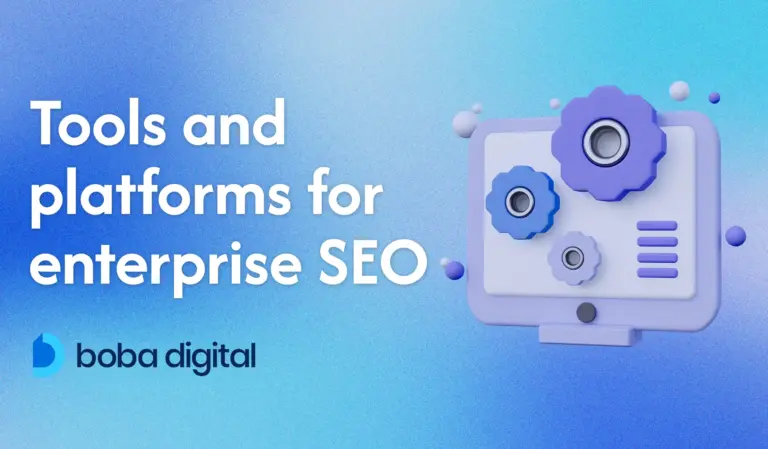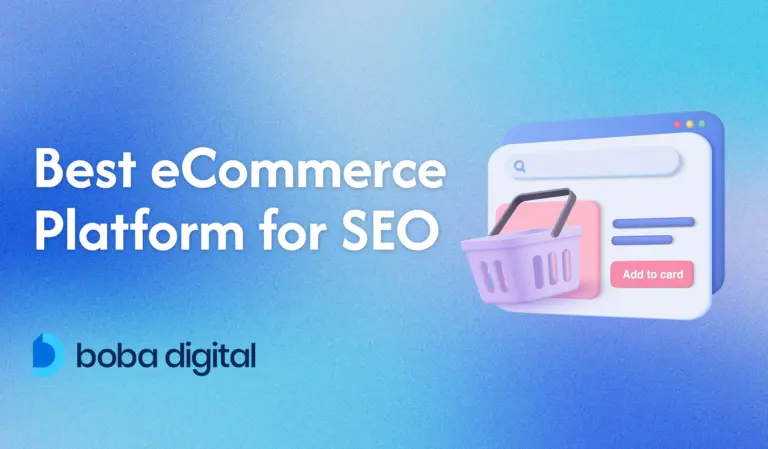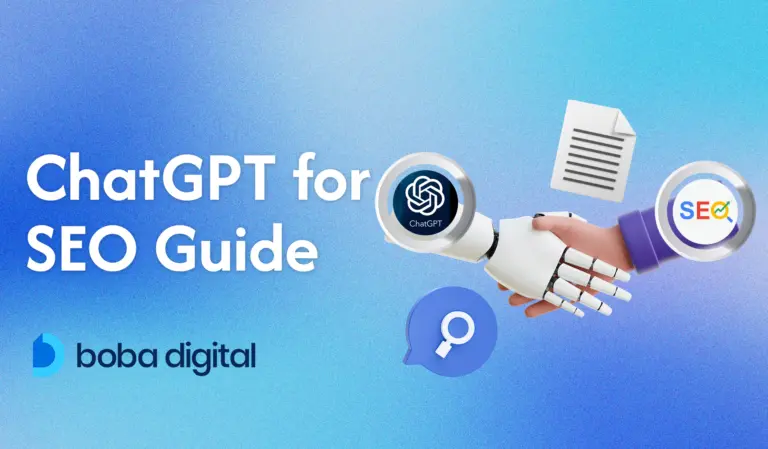B2B SEO Strategy in 2025 – Get More Organic Leads in the Age of AI
In 2025, mastering B2B SEO strategies is vital for reaching decision-makers and driving organic traffic. This guide breaks down essential tactics—from keyword research and content optimization to technical SEO and staying updated with AI trends, all of which are part of a comprehensive B2B SEO strategy. By following these steps, you’ll enhance your rankings and attract more business clients.
Key Takeaways
- B2B SEO revolves around attracting businesses through tailored content that addresses the specific needs of decision-makers, contrasting B2C’s focus on individual consumers.
- Key strategies for B2B SEO include creating detailed buyer personas, conducting thorough keyword research, and performing technical audits to ensure effective search engine optimization.
- A successful B2B SEO strategy leverages high-quality content across different formats, focuses on building quality backlinks, and continuously adapts to emerging trends like AI and mobile optimization.
Understanding B2B SEO Strategy
B2B SEO is all about optimizing a business’s website content and structure to attract other businesses through search engines. The main goal of a B2B SEO strategy is to attract businesses and professionals using organic SEO methods. Unlike B2C SEO, which targets individual consumers, B2B SEO focuses on reaching decision-makers within organizations. This approach involves creating highly targeted content that addresses the specific needs and challenges of potential business clients.
A well-optimized landing page is crucial in a B2B SEO strategy as it serves as the initial point of interaction, driving traffic and converting visitors into customers.
Effective B2B SEO requires a deep understanding of the audience and the ability to craft informative marketing messages that highlight product features, benefits, and solutions to specific business problems.
Continuously adapting and optimizing SEO practices to align with evolving search engine algorithms and user behaviors is crucial for success. This approach helps businesses achieve prominent positions in search results, driving organic traffic and establishing industry leadership.
Key Differences Between B2B and B2C SEO
Grasping the nuances between B2B and B2C SEO is vital for creating effective strategies. B2B SEO targets businesses rather than individual consumers, reflecting a distinct audience focus. The B2B sales cycle is typically longer and more complex, often taking over 18 months to complete. This complexity results from multiple stakeholders being involved in the decision-making process, requiring extensive research and negotiations.
Preferred marketing strategies in B2B SEO include blogging and email marketing to effectively reach target audiences. Unlike B2C SEO, which often relies on quick conversions, B2B SEO focuses on nurturing leads over a longer period. This requires creating content that meets the specific needs of different stakeholders and guiding them through the various stages of the buying process.
Recognizing these differences allows businesses to tailor their SEO strategies to align with their target audience’s behavior and preferences.
Building Your B2B SEO Foundation
A strong foundation is crucial for B2B SEO success. This involves creating detailed buyer personas, conducting thorough keyword research, and performing a technical SEO audit. These foundational elements help businesses understand their audience better, identify relevant keywords, and ensure their website is optimized for search engines.
Benchmarking B2B SEO performance is also essential for evaluating progress and making necessary adjustments. Measuring unique visitors helps assess interest levels and brand reach.
The following subsections provide practical steps to build a robust B2B SEO strategy, delving deeper into each foundational aspect.
Creating Detailed Buyer Personas
Creating detailed buyer personas is essential for understanding prospective customers and attracting targeted traffic. Buyer personas are illustrations of ideal customers, including characteristics based on customer data. Gather data from customer interviews and sales team feedback. Additionally, conduct market research to create effective buyer personas. This information should include demographic, business, and career details to target specific audiences successfully.
Using tools like HubSpot’s Make My Persona and Semrush’s free buyer persona tool can assist in developing detailed buyer personas. Incorporating insights from the sales team can refine SEO strategies to better meet customer needs and expectations.
Aligning content with these personas helps create more relevant and engaging content that resonates throughout the customer journey.
Conducting Keyword Research
Keyword research is a critical component of B2B SEO as it identifies the specific terms and phrases potential clients use when searching for products or services. Tools like Google Keyword Planner and Moz Keyword Explorer can aid in identifying relevant keywords. Start by entering a seed keyword into your selected tool to generate related search terms. Utilize Google Autocomplete to discover long-tail keywords that users often search for.
Analyzing competitors’ keywords using tools can reveal terms that drive significant traffic to their sites. Focus on long-tail keywords for bottom-of-the-funnel strategies, targeting users ready to make purchases. Top-of-the-funnel keywords are also essential for building brand awareness and capturing the interest of a broader audience. Understanding search volume is crucial in this process, as it helps gauge the popularity of specific search terms and tailor content to match user intent. B2B keywords may involve lower search volumes compared to B2C keywords, but they focus on specific user needs.
Implement identified keywords in title tags, meta descriptions, headings, and throughout the content for better SEO performance. Consistent monitoring of keyword rankings is vital for effective B2B SEO optimization. Thorough keyword research allows businesses to develop a comprehensive strategy that drives organic traffic and improves search engine rankings.
Mapping Keywords to the Sales Funnel
Mapping keywords to the sales funnel is a crucial step in developing a successful B2B SEO strategy. This process involves identifying the keywords and phrases that potential customers use at different stages of the buying process and aligning them with relevant content and landing pages. By doing so, businesses can create a seamless user experience, increase conversions, and ultimately drive revenue.
To map keywords to the sales funnel, businesses should start by identifying the different stages of their sales funnel, such as awareness, consideration, and decision. Next, they should conduct keyword research to identify the keywords and phrases that potential customers use at each stage. This can be done using tools such as Google Keyword Planner, Ahrefs, or SEMrush.
Once the keywords have been identified, businesses should create content and landing pages that are optimized for those keywords. This can include blog posts, product pages, and other types of content that provide value to potential customers. By mapping keywords to the sales funnel, businesses can create a targeted and effective SEO strategy that drives real results.
Performing a Technical SEO Audit
A technical SEO audit checks website elements such as crawlability and indexability, which are vital for ensuring search engines can access and rank the site effectively. Tools like Screaming Frog SEO Spider and Google Search Console can be used for a technical SEO audit. Google Analytics also helps evaluate site performance from a search engine perspective and can assist in optimizing the site’s technical aspects.
Key foundational elements to address during a technical SEO audit include crawlability, indexability, and identifying duplicate content issues. A technical SEO audit assesses various aspects of a website. This includes website structure, content quality, mobile-friendliness, page speed, and social media presence.
To improve for mobile users, ensure the website is fully responsive, adapting to different screen sizes and devices. Regular technical SEO audits help maintain a healthy website that ranks well in search engine results.
Content Strategy for B2B SEO
Content is king, especially in the realm of B2B SEO. Creating high-quality content is essential for good B2B SEO and enhances educational content reach. A well-developed content strategy aligns with keyword strategy to ensure resonance with the right audience, driving engagement. High-quality content also improves brand visibility and fosters trust among B2B audiences.
In B2B, detailed and informative content is key for nurturing leads. Different content formats, such as long-form pillar guides, comparison pages, and cluster content pages, play significant roles in engaging potential customers and addressing their specific pain points.
Understanding your audience and insights from keyword research are critical for effective B2B content creation. The upcoming subsections will explore how to develop a scalable content strategy, optimize landing pages, and leverage different content formats.
Developing a Scalable Content Strategy
A scalable content strategy is crucial for driving visibility throughout the sales funnel. To create appropriate content for different parts of the sales funnel, research the content types needed for each stage. The pillar-cluster model organizes content by aligning keywords and topics to target users at various stages of the buying process. A topic cluster typically features a pillar page and its cluster pages that delve into related keywords. Cluster page linking to its corresponding pillar page enhances authority and improves visibility and ranking.
Integrating links in guest posts drives qualified traffic and establishes brand authority in your niche. AI technologies can streamline content creation and improve ranking strategies for B2B companies.
Utilizing tools like Topic Research can generate content ideas to ensure your content strategy remains dynamic. A scalable content strategy enables businesses to create valuable content that meets target audience needs and drives SEO success.
Optimizing Landing Pages and Service Pages
Optimizing landing pages is critical for converting users and driving sales effectively. A well-optimized landing page serves as the initial point of interaction for users, highlighting features such as unique content, effective calls to action, and strategic keyword usage to enhance SEO performance and user engagement. Key elements to consider include keyword usage, title tags, meta descriptions, and internal links. Utilize keywords from research to develop and optimize landing pages to enhance search visibility. The On Page SEO Checker can be employed to audit product or service landing pages for on page optimization.
Effective landing pages should contain sufficient content, generally between 500 and 2000 words, to engage users effectively. B2B landing pages often contain insufficient content, typically ranging from only 50-100 words, which may hinder conversion.
Ensuring that landing pages are optimized for both SEO and conversions before creating content is critical for maximizing their effectiveness.
Leveraging Different Content Formats
Utilizing diverse content formats like videos and infographics can enhance engagement and cater to various audience preferences. Publishing original research benefits a B2B brand by positioning it as an authority, attracting backlinks, and increasing visibility. Effective blog posts should prioritize readability and provide actionable insights to engage B2B audiences.
B2B case studies should include storytelling elements such as the customer’s problem, the solution implementation process, benefits realized, quotes, and specific results. Regular contributions in guest posting solidify a brand’s reputation as a thought leader and can enhance visibility.
Guest posting helps in gaining valuable SEO links, enhancing visibility, and driving relevant traffic. Utilizing varied content formats helps create valuable content that resonates with the target audience and boosts SEO performance.
Off-Site SEO Strategies
To truly excel in B2B SEO, it’s crucial to look beyond your own website. Implementing an off-site SEO strategy is essential for improving website rankings and boosting visibility in search results. An off-site SEO strategy enhances a website’s authority, which is a key factor in gaining higher search engine rankings. With improved authority, businesses can attract more organic traffic from search engines, resulting in greater visibility and engagement.
Effective off-site SEO strategies include building quality backlinks, engaging in broken link building, and utilizing social media for SEO. By implementing these strategies, businesses can drive growth and establish a solid online presence.
The following subsections delve into each of these off-site SEO techniques, offering actionable tips for success.
Building Quality Backlinks
Quality backlinks are essential as they enhance trust and authority in the eyes of search engines. Backlinks are crucial for SEO and ranking well in search engines. Prioritize quality over quantity when creating backlinks. Effective PR efforts can significantly contribute to acquiring backlinks and enhancing brand recognition. Utilize platforms like Cision PRWeb for digital PR outreach.
Offering tools that provide real value can lead to natural backlinks from industry sites. Examples of free tools include a product management checklist and a hiring cost calculator. Promote these tools through blogs, forums, and LinkedIn to increase backlinks.
Guest posting helps in expanding reach and establishing connections with new audiences. Focus on actionable insights when creating content for guest posts. B2B companies can gain links from their partners by requesting to be listed on partner pages.
Building quality backlinks through these methods enhances search engine rankings and drives organic traffic.
Engaging in Broken Link Building
Broken link building is a strategy that helps gain backlinks by replacing broken links on other websites with your own relevant content. Tools like Ahrefs Site Explorer are valuable for finding broken links on other websites.
When approaching websites for broken link building, it’s important to do so with courtesy and emphasize the benefits of the suggestion to their audience. When suggesting replacements for broken links, highlight the value your content offers to the website owner.
Engaging in broken link building helps acquire quality backlinks and improves off-site SEO efforts.
Utilizing Social Media for SEO
Social media platforms serve as valuable channels for enhancing SEO efforts. Utilizing social media effectively increases brand visibility, which can lead to higher organic search traffic. Social media can amplify content reach, thereby enhancing its potential to garner backlinks.
To leverage social media for SEO, regularly share valuable content, engage with your audience, and use relevant keywords in your posts. This approach enhances SEO performance and drives more organic traffic to the website.
Leveraging Free Tools for B2B SEO
There are many free tools available that can help businesses improve their B2B SEO efforts. Some of the most useful tools include:
- Google Search Console: This tool provides insights into how Google views a website and can help businesses identify areas for improvement.
- Google Keyword Planner: This tool helps businesses identify relevant keywords and phrases that potential customers use to search for products or services.
- Ahrefs Webmaster Tools: This tool provides insights into a website’s backlink profile and can help businesses identify opportunities for link building.
- SEMrush Audit Tool: This tool provides a comprehensive audit of a website’s technical SEO and can help businesses identify areas for improvement.
By leveraging these free tools, businesses can gain valuable insights into their SEO efforts and make data-driven decisions to improve their online presence. These tools are essential for conducting keyword research, performing technical audits, and enhancing link building strategies, ultimately driving better search engine rankings and organic traffic.
Creating Helpful Tools for Your Industry
Creating helpful tools for your industry is a great way to attract links and establish your business as a thought leader. Some examples of helpful tools include:
- Calculators: Creating calculators that help potential customers solve a problem or make a decision can be a great way to attract links and drive traffic to a website.
- Templates: Creating templates that help potential customers complete a task or achieve a goal can be a great way to attract links and drive traffic to a website.
- eBooks and Whitepapers: Creating comprehensive guides that provide valuable information and insights can be a great way to attract links and establish a business as a thought leader.
By creating helpful tools for your industry, businesses can attract links, drive traffic, and establish themselves as thought leaders in their industry. These tools not only provide value to potential customers but also enhance the website’s authority and visibility in search engine results.
Navigating Complex Sales Funnels
Navigating complex sales funnels can be challenging, but there are several strategies that businesses can use to succeed. Some of the most effective strategies include:
- Identifying the Different Stages of the Sales Funnel: By identifying the different stages of the sales funnel, businesses can create targeted content and marketing campaigns that speak to potential customers at each stage.
- Creating Targeted Content: By creating targeted content that speaks to potential customers at each stage of the sales funnel, businesses can increase conversions and drive revenue.
- Using Marketing Automation: By using marketing automation tools, businesses can streamline their marketing efforts and create a more personalized experience for potential customers.
By navigating complex sales funnels effectively, businesses can increase conversions, drive revenue, and achieve their marketing goals. These strategies help in creating a more efficient and effective sales process, ensuring that potential customers are guided smoothly from awareness to decision, ultimately leading to higher conversion rates and business growth.
Tracking and Measuring SEO Performance
Before:
Tracking SEO KPIs is crucial for measuring success and making data-driven decisions. Key performance indicators (KPIs) to track for SEO success include organic traffic, keyword rankings, click-through rates (CTR), backlink growth, and conversion rates from organic search. Proper tracking and attribution are essential for accurate monitoring and attributing revenue to search traffic.
After:
Key performance indicators (KPIs) to track for SEO success include:
- Organic traffic
- Keyword rankings
- Click-through rates (CTR)
- Backlink growth
- Conversion rates from organic search
Proper tracking and attribution are essential for accurate monitoring and attributing revenue to search traffic.
SEO is a continuous process that requires monthly or quarterly reviews of KPIs to assess ongoing progress. The next subsections will explore using Google Analytics and Google Search Console, the importance of regularly reviewing keyword rankings, and the value of analyzing sales team feedback.
Using Google Analytics and Google Search Console
Google Analytics and Google Search Console are essential tools for assessing site performance from a search visibility standpoint. These tools provide insights into organic traffic, keyword performance, and site health. Collaborating with analysts is important for ensuring the accuracy of data reports in SEO tracking.
These tools help identify areas for improvement and inform data-driven decisions to enhance SEO efforts. Regularly reviewing these insights helps maintain a healthy website and improve search engine rankings.
Regularly Reviewing Keyword Rankings
Tracking keyword rankings is fundamental in B2B SEO, helping businesses understand their visibility and competitive positioning. Regularly reviewing keyword rankings is essential for comprehensive assessment and ongoing optimization. Tracking keyword rankings allows businesses to adapt SEO strategies for improved search engine performance and increased targeted traffic.
Consistent monitoring of keyword rankings ensures alignment with changing market dynamics and enhances overall SEO effectiveness. This proactive approach helps businesses stay ahead of the competition and maintain strong search engine rankings.
Analyzing Sales Team Feedback
Integrating feedback from the sales team is crucial for aligning SEO strategies with real customer challenges and preferences. The sales team provides insights into customer pain points, which can shape content and keyword targeting in SEO efforts. Methods for integrating sales feedback include regular meetings, surveys, and feedback loops to ensure continuous alignment.
Aligning SEO strategies with the sales team’s feedback enhances engagement and leads to higher conversion rates. Incorporating this feedback helps create more relevant and effective SEO strategies that resonate with the target audience.
Adapting to Emerging Trends in B2B SEO
In 2025, a strong B2B SEO strategy will be essential for increasing brand visibility and driving organic traffic. The era of AI necessitates a focus on brand-centric content strategies. Staying updated with emerging trends allows businesses to adapt their SEO strategies to remain competitive and relevant.
Key trends to consider include embracing AI and automation tools, prioritizing mobile friendliness, and enhancing Core Web Vitals. The subsequent subsections explore these trends in detail and offer actionable tips for implementation.
Embracing AI and Automation Tools
AI systems can analyze large datasets quickly, helping businesses identify patterns and insights that can inform their SEO strategies. AI-driven analytics enable deeper insights into website performance and user behavior, allowing for more strategic SEO decisions. Automation tools can handle repetitive tasks such as keyword tracking, backlink analysis, and performance reporting, allowing SEO professionals to focus on strategic planning.
Integrating AI and automation tools enhances efficiency and improves the overall effectiveness of SEO campaigns, leading to better rankings and increased visibility. Embracing these technologies helps businesses stay ahead of the curve and optimize their SEO efforts.
Prioritizing Mobile Friendliness
Mobile optimization is crucial as an increasing number of users access websites through mobile devices. A responsive design not only enhances user experience but is also a significant factor in search engine rankings. Ensure your website is fully responsive, adapting to different screen sizes and devices.
Techniques for optimizing the mobile experience include optimizing image sizes, using caching, minimizing heavy scripts, and testing the page with speed optimization tools. Prioritizing mobile friendliness enhances search engine rankings and user experience.
Enhancing Core Web Vitals
Core Web Vitals are crucial metrics that directly influence search engine rankings by measuring site speed, interactivity, and visual stability. The three important search signals measured by Core Web Vitals are Largest Contentful Paint (LCP), First Input Delay (FID), and Cumulative Layout Shift (CLS).
Improving site speed through techniques such as compressing web pages and optimizing images is essential for enhancing user experience. Google continues to prioritize Core Web Vitals, making it essential for B2B websites to optimize for loading speed and interactivity.
Focusing on these metrics enhances search engine rankings and user experience.
Summary
In conclusion, a well-rounded B2B SEO strategy in 2025 involves understanding the unique aspects of B2B SEO, building a strong foundation, developing a scalable content strategy, and implementing effective off-site SEO techniques. Tracking and measuring your SEO performance is crucial for ongoing success, and staying updated with emerging trends ensures your strategies remain relevant and effective.
By following the tips and strategies outlined in this guide, businesses can enhance their online presence, attract more organic leads, and achieve long-term SEO success. Remember, SEO is a continuous process that requires regular monitoring and adaptation. Stay proactive, embrace new technologies, and keep refining your strategies to stay ahead of the competition.
Frequently Asked Questions
What is the main difference between B2B and B2C SEO?
The main difference between B2B and B2C SEO is that B2B focuses on businesses and often involves longer, more complex sales cycles, whereas B2C targets individual consumers with quicker sales processes. Understanding this distinction can really help tailor your SEO strategies effectively.
Why is keyword research important in B2B SEO?
Keyword research is crucial in B2B SEO because it uncovers the exact terms your potential clients are using, allowing you to target those keywords effectively and boost your search engine visibility. This means attracting the right audience who are genuinely interested in what you offer.
How can AI and automation tools benefit B2B SEO?
AI and automation tools can significantly enhance B2B SEO by streamlining repetitive tasks and analyzing vast amounts of data quickly. This enables you to make more strategic decisions and boost your website’s performance efficiently.
What are Core Web Vitals, and why are they important?
Core Web Vitals are key metrics that assess your website’s speed, interactivity, and visual stability, and they significantly impact your search engine rankings. Prioritizing these factors not only boosts your visibility online but also enhances the overall experience for your visitors.
How can social media enhance SEO efforts?
Social media boosts your SEO by expanding your content’s reach and visibility, which can lead to more backlinks and increased organic traffic. So, leveraging social platforms is a smart strategy for better search rankings!

